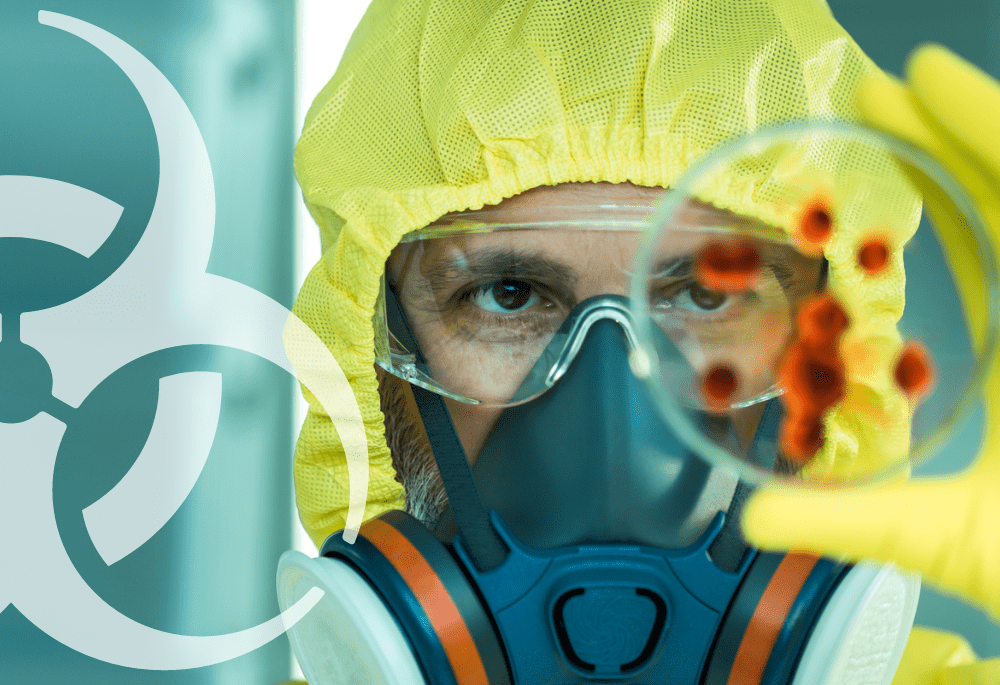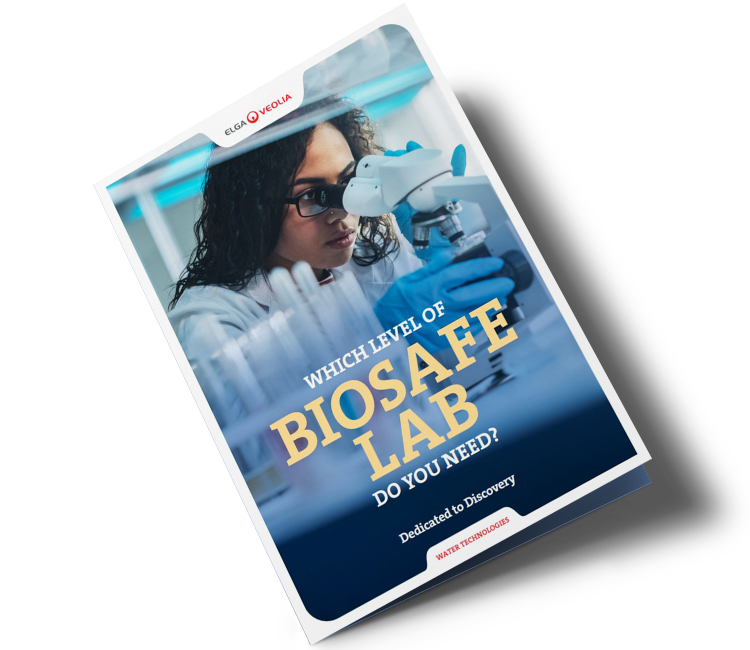The importance of lab biosafety
23 5月 2023

Protecting employees, the wider public and the environment is at the top of the list of things to consider when running a successful lab, especially in facilities that regularly handle infectious agents. Failure to implement and maintain stringent biosafety measures can lead to laboratory-acquired infections, which could be anything from a relatively benign gastrointestinal infection to contracting deadly viruses like Ebola. Of course, both good laboratory practices and standard microbial protocols can go a long way to preventing contamination, but particularly hazardous pathogens require much more comprehensive safety precautions.
Biorisk management
The inherent biorisk associated with any microbiological experiment depends entirely on the characteristics of the agent in question, including its capability to infect humans, the severity of the disease caused, and the existence of vaccines and effective treatments. The pathogen’s possible routes of transmission, infectious dose, environmental stability, host range, country of origin and genetic characteristics must also be taken into consideration. To complicate things further, it isn’t always possible to predict every possible adverse incident, and judgements must sometimes be made based on incomplete information. For example, clinical laboratories may not always know the exact organisms present in a sample they’re working on, since they are often looking to identify the causative agents in order to provide a medical diagnosis.
What are the different levels of Biosafety and associated pathogens?
Governing bodies use the above criteria to characterize hazardous agents, and sort them into distinct groups based on the risk they present, requiring labs to adhere to strict precautionary protocols for each risk class. The names and exact details of these categories – along with corresponding mitigative measures – vary according to territory but, in the US and EU, they are referred to as biosafety levels (BSLs) and are defined as follows:
BSL 1
This is the lowest biosafety level, and it is appropriate for labs working with low-risk microbes that pose little to no threat of infection in healthy adults, and so only require standard microbiological practices. Associated pathogens include:
- Aspergillus niger
- Bacillus subtilis
- Agrobacterium radiobacter
- Escherichia coli
- Chickenpox
BSL 2
This applies to all labs handling pathogens associated with human diseases that pose a moderate risk to personnel and the environment. These agents can generally be handled safely on an open bench, provided the potential for producing splashes and aerosols is low. However, because of their potential to cause human disease, care must taken to prevent percutaneous injury, ingestion and mucous membrane exposure. Associated pathogens include:
- H. influenzae
- HIV
- Hepatitis B virus
- Mycobacterium
- Streptococcus pneumonia
- Salmonella
- Choleraesuis
- Toxoplasma

Which level of Biosafety do you need?
Check out our whitepaper for a more in-depth look at biosafety level criteria and precautions, hazardous agent case studies, and the role of purified water in lab biosafety.
Learn more
BSL 3
Increased precautions are required for indigenous or exotic agents that may cause potentially lethal disease on exposure via inhalation. In addition to BSL-2 practices, lab access must be strictly controlled, and anything leaving the premises – including waste – must be thoroughly decontaminated. Laboratory personnel may also be required to undergo routine medical surveillance and mandatory immunisation where appropriate. Associated pathogens include:
- Yellow fever virus
- M. tuberculosis
- West Nile virus
- Chikungunya
- Mycobacterium tuberculosis
BSL 4
The highest precautionary level is reserved for labs handling potentially fatal exotic agents that pose a high risk of aerosol-transmitted infections – like the Ebola and Marbung viruses – for which no vaccines or treatments exist. In addition to BSL-3 precautions, all lab personnel must shower and change their clothing on lab entry and exit, as well as wearing a full-body, air-supplied, positive pressure suit at all times.Associated pathogens include:
- Ebola virus
- Marbung virus
- Lassa virus
- Congo-Crimean haemorrhagic fever virus
A national response
The COVID-19 pandemic has helped to highlight the importance such biosafety labs in the study and prevention of infectious diseases, and many countries have responded by stepping up their national strategies. The Chinese government, for example, has mandated that every province must establish a BSL-3 lab, with all major cities required to have at least one BSL-2 facility.1 Additionally, the Wuhan Institute of Virology – already the largest BSL-4 lab in the world – will be expanding its capacity from 3,000 to 4,000 m2. It will serve as the national research and development centre for the prevention and control of emerging infectious diseases, as well as acting as a microorganism and virus culture collection hub, and a WHO infectious disease reference laboratory.2
Finding your level
Clearly a one-size-fits-all approach isn’t appropriate for every lab that handles hazardous agents – since the stakes of contamination can vary dramatically from pathogen to pathogen – and considered risk management, along with strict implementation of suitable biosafety level precautions, is essential in order to safeguard personnel and the general public from lab-acquired infections.
References
- All provinces in China are asked to set up P3 lab: Ministries. The Financial Express. https://thefinancialexpress.com.bd/health/all-provinces-in-china-are-asked-to-set-up-p3-lab-ministries-1589971069. Accessed 27/03/23
- Laboratory biosafety in China: past, present, and future. Guizhen Wu. ScienceDirect. https://www.sciencedirect.com/science/article/pii/S2590053619300291?via%3Dihub. Accessed 27/03/23.
How can we help?
Whether you need a reliable source of Type III water for rinsing contaminated glassware, or Type I ultrapure water source for cell culture in a biosafe cabinet, our team of experts are on hand to ensure you find the correct water purification system for your biosafe lab.
Contact Us
